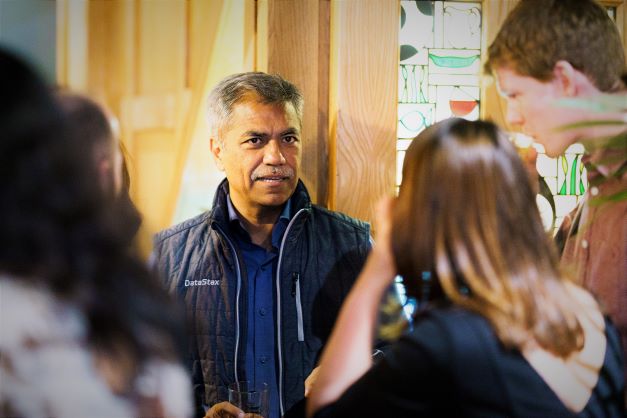SPONSORED -- The world is moving fast and progress is not linear. That much we have established in recent years. Whether we are facing a pandemic, a supply chain shock, war, climate change or rapid technological disruption, organisations are having to adapt – and innovate – more than ever for their survival and for success.
At a special event by The Stack and sponsored by DataStax, a panel including Yanna Winter, CIO of insurance group Generali, former HMG CDO and Rainmaker MD Christina Hammond-Aziz, and DataStax Chairman & CEO, Chet Kapoor, facilitated a vibrant discussion on how to inculcate a culture of innovation with an audience of digital leaders including global CTOs, CIOs and technology directors from across multiple industry verticals.
Held under Chatham House rule, the conversation spanned innovating with data, allocating creative time to technical teams whilst holding them accountable, the virtues of “rewarding failure” whilst meeting KPIs/OKRs – an area in particular that triggered lively debate – and innovation in operations and execution.
A key challenge in delivering innovation was ensuring adoption of new technologies and processes by the “frozen middle” as one attendee put it, edicts can come from on high; developers can be excited to deliver the cutting edge tools; but unless the ‘frozen middle’ who are responsible for both operationalising this innovation yet also keeping the lights on seamless are convinced, the glossiest strategy plan or new innovation can fail.

Creating a Culture of Innovation Event: Innovating with data
The conversation also covered innovating with data – a key priority for so many enterprises at the moment as they seek improved customer-centricity, to optimise existing operations and potential new markets.
Speaking to The Stack’s founder Ed Targett earlier in the evening, DataStax Chairman & CEO Chet Kapoor noted: “I get to spend a lot of time with leaders from global companies. And the other four things I talk about all the time: building a data culture, agility, data-driven decision making and building data pods ”
“One is that you must create a data culture. That does not start from somebody you appoint. It starts from you: you should ask for data all the time. If you don't ask for it, you will not have the culture because everythingdoes roll downhill. The second thing is you have to have a very agile mindset. You have to move fast!
"Third, you must have data that goes across the company. If you do not have something that goes across company-wide data ops groups, it doesn't work," Kapoor said.
https://www.youtube.com/watch?v=4NMofN_EnhA
"The fourth and the hardest and most important part is creating cross-functional ‘data pods’; taking a business leader, an IT leader and a data scientist, putting them in one group and telling them that you are all responsible for a project’s success. That is [often] fundamentally the hardest thing, because organisational inertia is a problem. But for every CEO out there is thinking ‘what do the digital natives do?’ and how can I do that?’
"You have to break down organisational silos…”
(DataStax’s métier, Chairman & CEO Chet Kapoor noted, is making it easier for developers to deliver that innovation across data at rest and streamed, whilst ensuring scalability from a small ‘data pod’ to global multinational scale using serverless and other services.)
Amid discussion on institutional inertia, one attendee – who had led a project building a next generation platform for portfolio management at a leading investment bank – put it, sometimes you have to take a “build it, demonstrate it and they will come” approach. They said: “We saw real reluctance to adopt a new approach until we had built and demonstrated something that simply made life easier and trading faster for our internal stakeholders. They didn’t want innovation until they were using it and could see what it did.”









